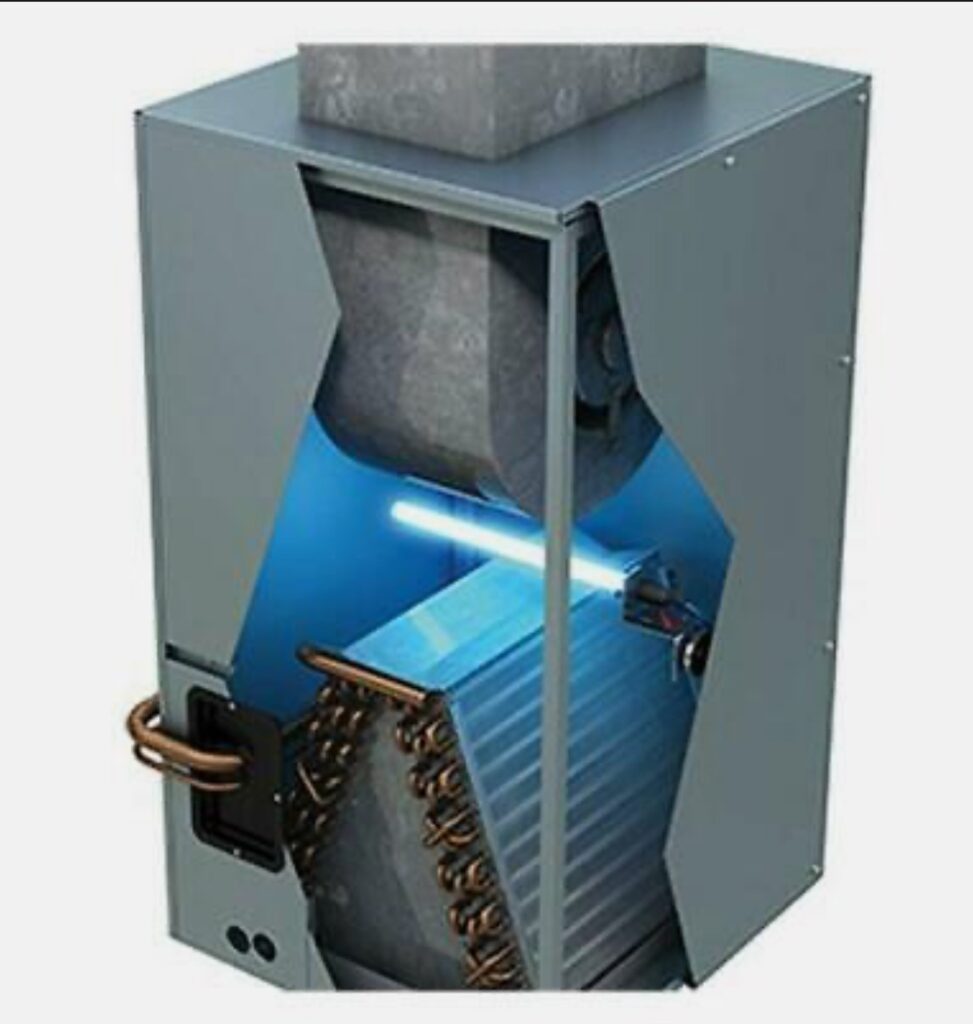UV light can provide several benefits when integrated into an HVAC (Heating, Ventilation, and Air Conditioning) system. Here’s how:
- Improved Air Quality: UV light helps in reducing the presence of microorganisms such as mold, bacteria, and viruses in the air. By installing UV lamps within the HVAC system, particularly near the evaporator coils or air handler, it helps keep these components clean and reduces the risk of these microbes being circulated throughout the building.
- Enhanced Coil Efficiency: UV light can prevent the growth of mold and mildew on the evaporator coils. Mold and other microbial growth on coils can reduce their efficiency, leading to higher energy consumption. By keeping the coils clean, UV light helps maintain the efficiency of the HVAC system.
- Reduced Maintenance Costs: Regular cleaning of HVAC components can be costly and labor-intensive. By using UV light to inhibit microbial growth, maintenance needs can be reduced, leading to lower overall maintenance costs and fewer service calls.
- Extended Equipment Lifespan: Keeping the coils and other components of the HVAC system free from mold and microbial growth can help extend the lifespan of the equipment. Reduced buildup and contamination mean that the system can operate more efficiently and reliably over time.
- Decreased Odors: Mold, mildew, and microbial growth in the HVAC system can sometimes lead to unpleasant odors circulating through the building. UV light helps prevent these issues by reducing the microbial sources of such odors.
- Better Overall Efficiency: A clean HVAC system runs more efficiently. By reducing the amount of dirt and microbial growth, UV light helps the system maintain its designed performance, which can contribute to more consistent temperature control and potentially lower energy bills.
UV light systems are typically installed in areas where they can effectively target the sources of microbial growth, such as the return air ducts or near the coils. They are usually used as a supplement to, rather than a replacement for, regular HVAC maintenance and cleaning practices.


